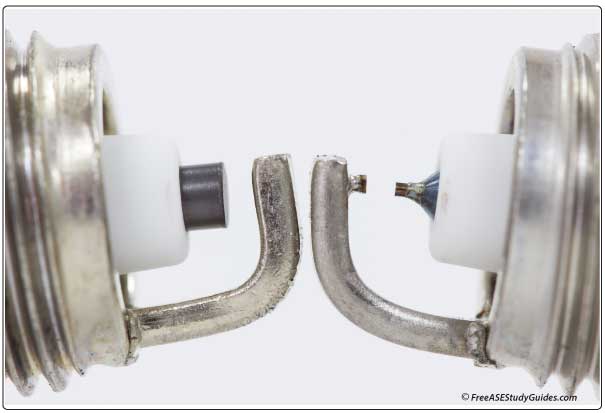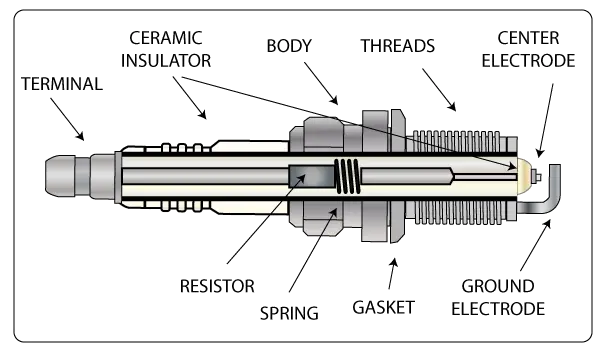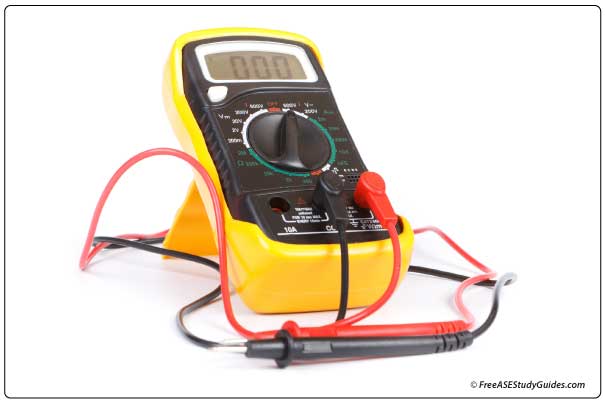Spark Plugs

Installing the wrong spark plug in an engine can cause many problems. Automotive spark plugs have resistors to help suppress ignition noise. They also come in different heat ranges and thread lengths. Today's engine control modules are sensitive and can set a misfire code if the wrong plug is installed.

The heat range depends on the center electrode's design and the ceramic insulator's length surrounding it. A hot plug is generally longer than a cold plug. A spark plug with a high heat range runs cleaner but can cause ping and pre-ignition in the wrong engine.
Spark plugs are self-cleaning; heat cleans the tip, primarily while cruising at highway speeds. A cold spark plug helps with preignition but can get dirty out sooner, especially if the vehicle is driven short distances or frequently idled.
Unfortunately, a hot tip can cause preignition, robbing the engine's power stroke of necessary energy, possibly resulting in damage.
Spark Plug Testing

Test spark plug resistance with a digital multimeter. Spark plugs can leak voltage or foul out from excessive carbon deposits. Use a spark plug cleaner to clean debris from the spark plug tip. Since automotive spark plugs have a resistor to prevent interference, there should be resistance between the terminal and the center electrode of ~ 4000 Ohms. Check the manufacturer's specifications for details.